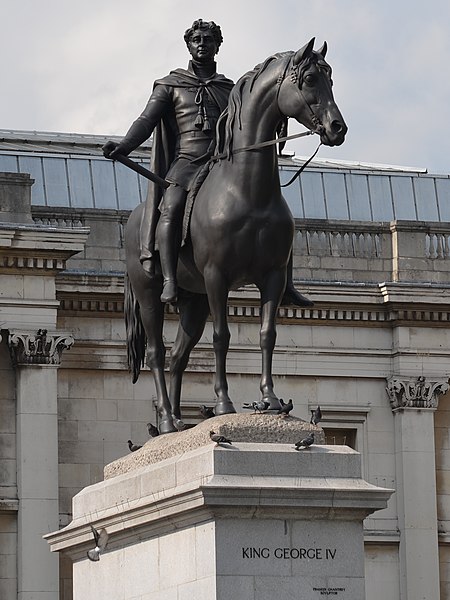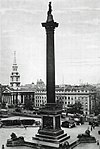Equestrian statue of George IV, Trafalgar Square
1843 in London1843 sculpturesBronze sculptures in the United KingdomGeorge IV of the United KingdomGrade II listed monuments and memorials ... and 7 more
Grade II listed statues in the City of WestminsterMonuments and memorials in LondonOutdoor sculptures in LondonPages containing links to subscription-only contentSculptures of men in the United KingdomStatues of monarchsTrafalgar Square

The statue of George IV in Trafalgar Square, London, is a bronze equestrian statue by Sir Francis Legatt Chantrey. It depicts the King dressed in ancient Roman attire and riding bareback. The sculpture was originally designed to sit on top of the Marble Arch at the entrance to Buckingham Palace, but was placed in its current location following the King's death.
Excerpt from the Wikipedia article Equestrian statue of George IV, Trafalgar Square (License: CC BY-SA 3.0, Authors, Images).Equestrian statue of George IV, Trafalgar Square
Trafalgar Square, City of Westminster Covent Garden
Geographical coordinates (GPS) Address Nearby Places Show on map
Geographical coordinates (GPS)
| Latitude | Longitude |
|---|---|
| N 51.50838 ° | E -0.12759 ° |
Address
Trafalgar Square
Trafalgar Square
SW1Y 5BJ City of Westminster, Covent Garden
England, United Kingdom
Open on Google Maps











